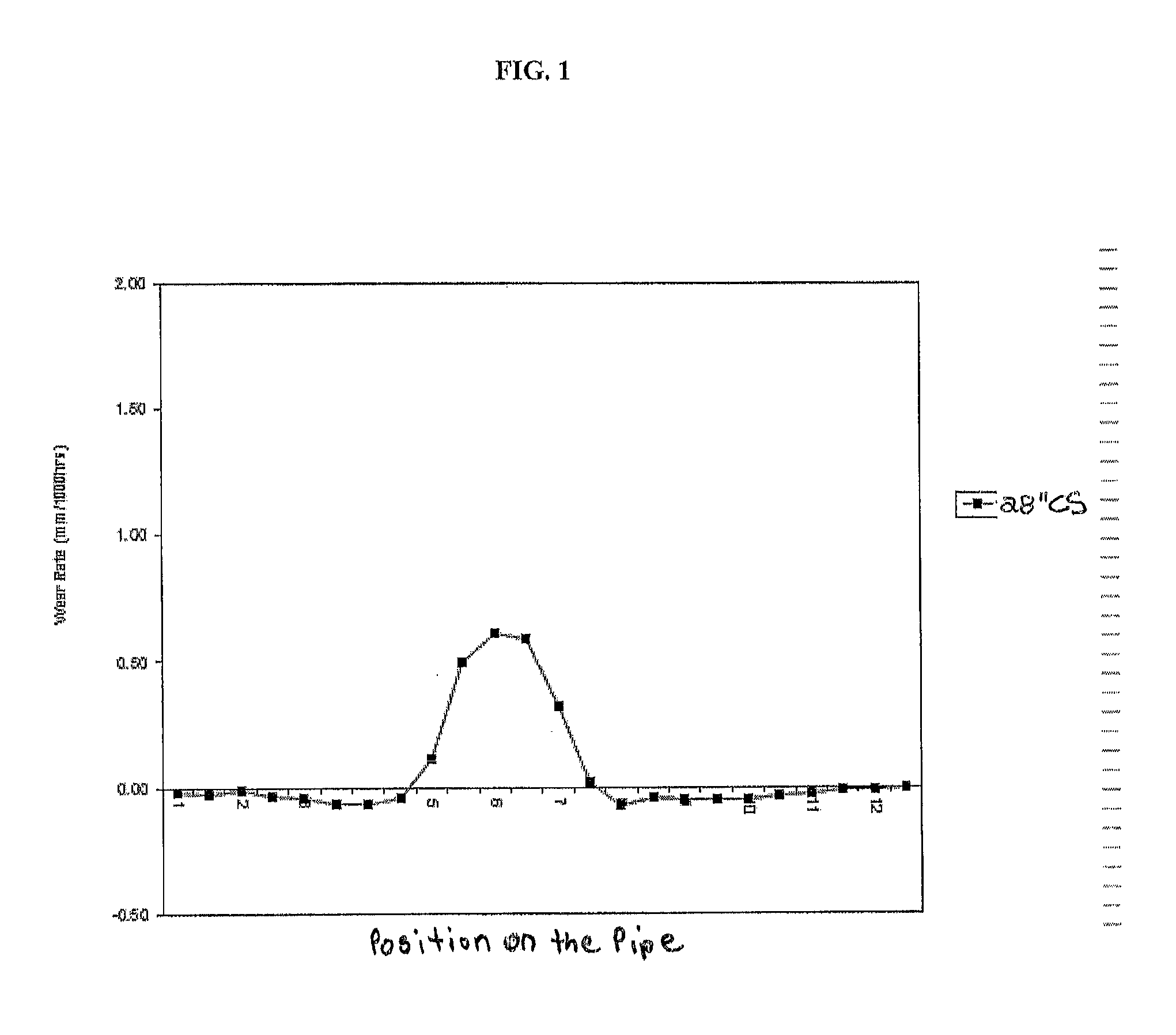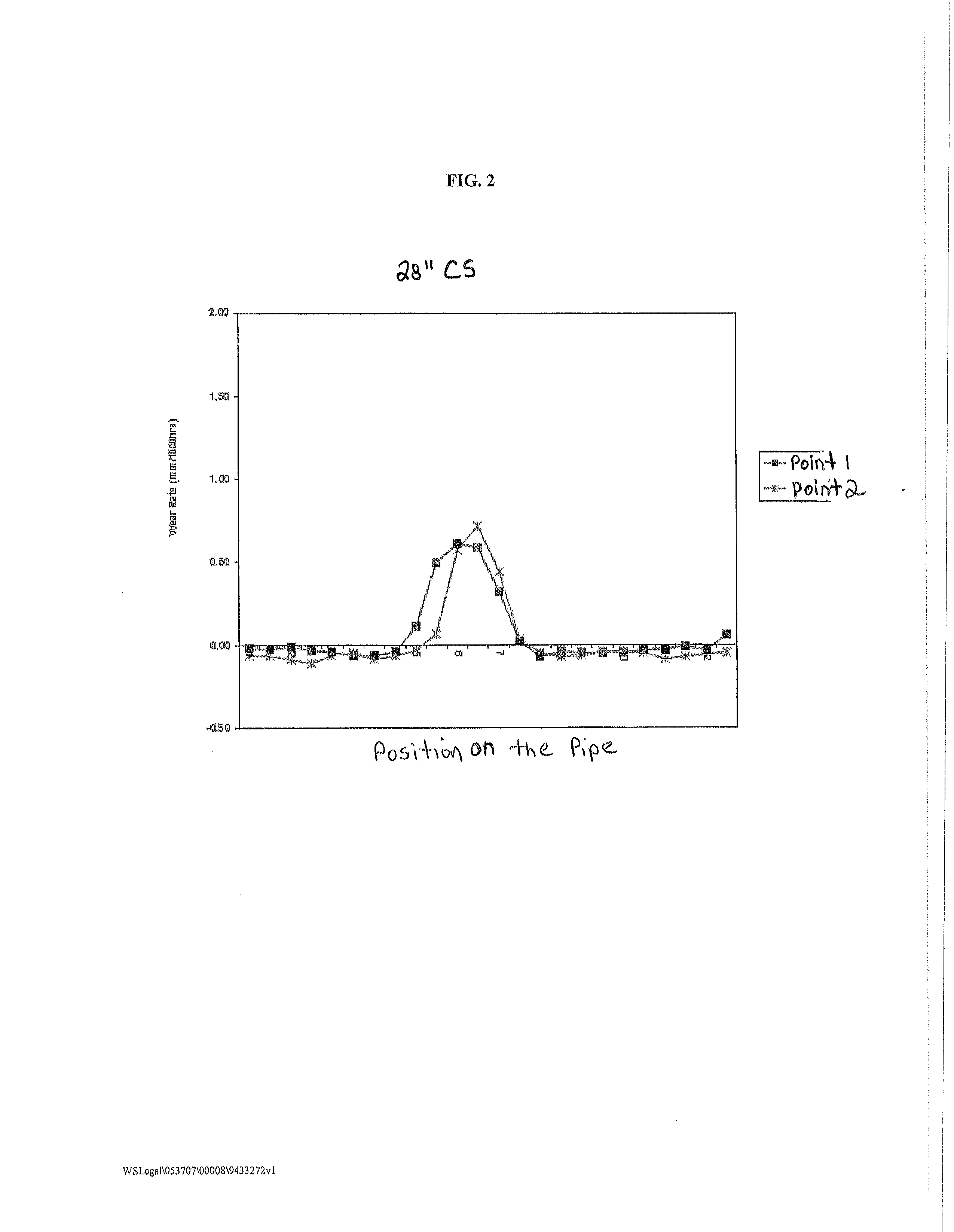Reduced pipe wear in slurry transport pipelines
a technology of slurry transportation pipelines and pipe wear, which is applied in pipeline systems, bulk conveyors, gas/liquid distribution and storage, etc., can solve problems such as pipe wear reduction
- Summary
- Abstract
- Description
- Claims
- Application Information
AI Technical Summary
Benefits of technology
Problems solved by technology
Method used
Image
Examples
example 1
[0035]Routinely, piping used by the applicant in coarse tailings pipelines is 24″ in diameter (inner diameter). However, recently, some of the 24″ pipe of Coarse Tailings Pipeline 1 was replaced with 28″ pipe, as there was a need to increase the length of this pipeline and the already-installed pumping capacity was not in place to use 24″ pipes for this extension. Since the pipeline pressure drop is known to decrease with pipe diameter, a section of 24″ diameter piping was replaced with 28″ diameter piping.
[0036]However, it was surprisingly discovered that the 28 inch lines showed significant wear rate reductions as compared to 24 inch lines. Further, it appeared as though a stationary bed had formed on the pipe bottom and that the stationary bed was acting as a protective layer to the steel.
[0037]FIG. 4 shows the wear rate (mm / 1000 hrs) results obtained when testing Coarse Tailings Pipeline 1 for wear at two points along the pipeline where there was 24″ SS pipe (dark solid squares ...
example 2
[0044]FIG. 9 is an illustration of a pipe 400 having a pipe diameter (Dp) where two densitometers, 420 and 420′, have been placed at about the 155° and 130° position of the pipe 400, respectively. In this example, “y”, which is the height of the stationary bed of solids 430, is 5 cm, and Dp is 1 meter. Thus, the relative stationary bed height, y / Dp, is about 0.05, which was found to be around the minimum relative height for the stationary bed for reduced pipe wear at the 6 o'clock position (i.e., 180° position) of the pipe 400. Densitometer 420 is positioned to be able to detect the minimum relative height of 0.05.
[0045]It was found, however, that if the relative bed height is too high, i.e., approaches 0.25, while the wear at the 6 o'clock position of the pipe is still reduced, wear at the 4 o'clock (i.e., 120° position) and 8 o'clock position (i.e., 240° position of the pipe) begins to increase. This is believed to be due to the disturbance / movement of the surface of the bed at th...
PUM
 Login to View More
Login to View More Abstract
Description
Claims
Application Information
 Login to View More
Login to View More - R&D
- Intellectual Property
- Life Sciences
- Materials
- Tech Scout
- Unparalleled Data Quality
- Higher Quality Content
- 60% Fewer Hallucinations
Browse by: Latest US Patents, China's latest patents, Technical Efficacy Thesaurus, Application Domain, Technology Topic, Popular Technical Reports.
© 2025 PatSnap. All rights reserved.Legal|Privacy policy|Modern Slavery Act Transparency Statement|Sitemap|About US| Contact US: help@patsnap.com



